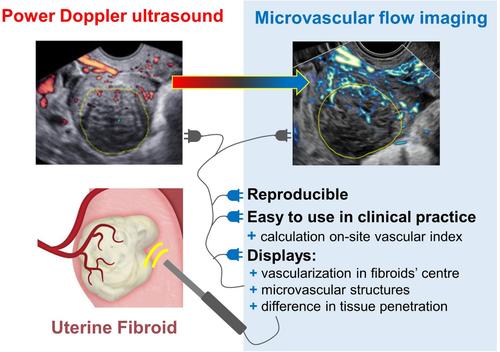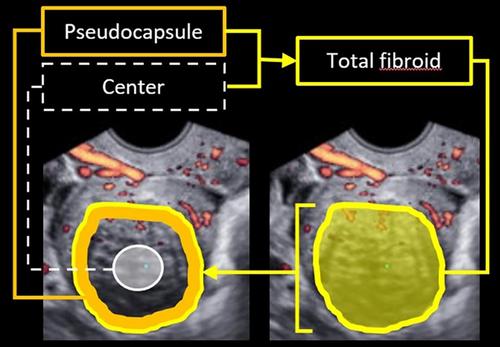Imaging fibroid vascularity may predict fibroid growth and aid to determine most appropriate therapy. Microvascular (MV) flow imaging is relatively new and is able to detect slow flow in small vessels. Data on feasibility, reproducibility, and reliability of MV-flow imaging in fibroids is lacking. The purpose of our study was to determine the reproducibility of MV-flow imaging and to explore this technique for clinical practice for assessing blood flow in fibroids.
Thirty patients with one or multiple fibroids (diameter 1.5–12.0 cm) were prospectively included. Transvaginal ultrasound scanning was performed in B-mode, 2D MV-Flow™, 2D and 3D power Doppler mode (HERA W10, Samsung) by two experienced gynecologists at a tertiary care clinic from February to December 2021. The primary outcome was intra- and interobserver agreement of the vascular index (VI) and color score (CS). The following parameters: ‘2D MV-flow VI’, ‘3DPD VI’, ‘2D MV-flow CS’ and ‘2DPD CS’ were measured offline in the center, pseudocapsule, and entire fibroid. Secondary offline outcomes for exploring 2D MV-flow for clinical practice, included (1) ability to discern vascular structures, (2) assessing the degree of vascularity via CS and calculating a VI, and (3) determining penetration depth of the ultrasound signal in both power Doppler and MV-flow imaging.
All scans of the 30 included patients were of sufficient quality to analyze. Inter- and intra-observer correlations of all studied parameters were good to excellent, both for 2D MV-flow and 2D power Doppler (intercorrelation coefficient 0.992–0.996). Using 2D MV-flow different vascular structures were visible in detail, in contrary to using 2D and 3D power Doppler. In significantly more fibroids central flow could be visualized using 2D MV-flow (63%) than with 2D power Doppler (13%, p = 0.001). Finally, penetration of the ultrasound signal was deeper using 2D MV-flow (3.92 cm) than with 2D power Doppler (2.95 cm, p = 0.001).
Using 2D MV-flow imaging for determining vascularity is highly reproducible. It has potential added value for clinical practice as it depicts detailed vascular structures and the degree of vascularity, especially in the center of the fibroid.



